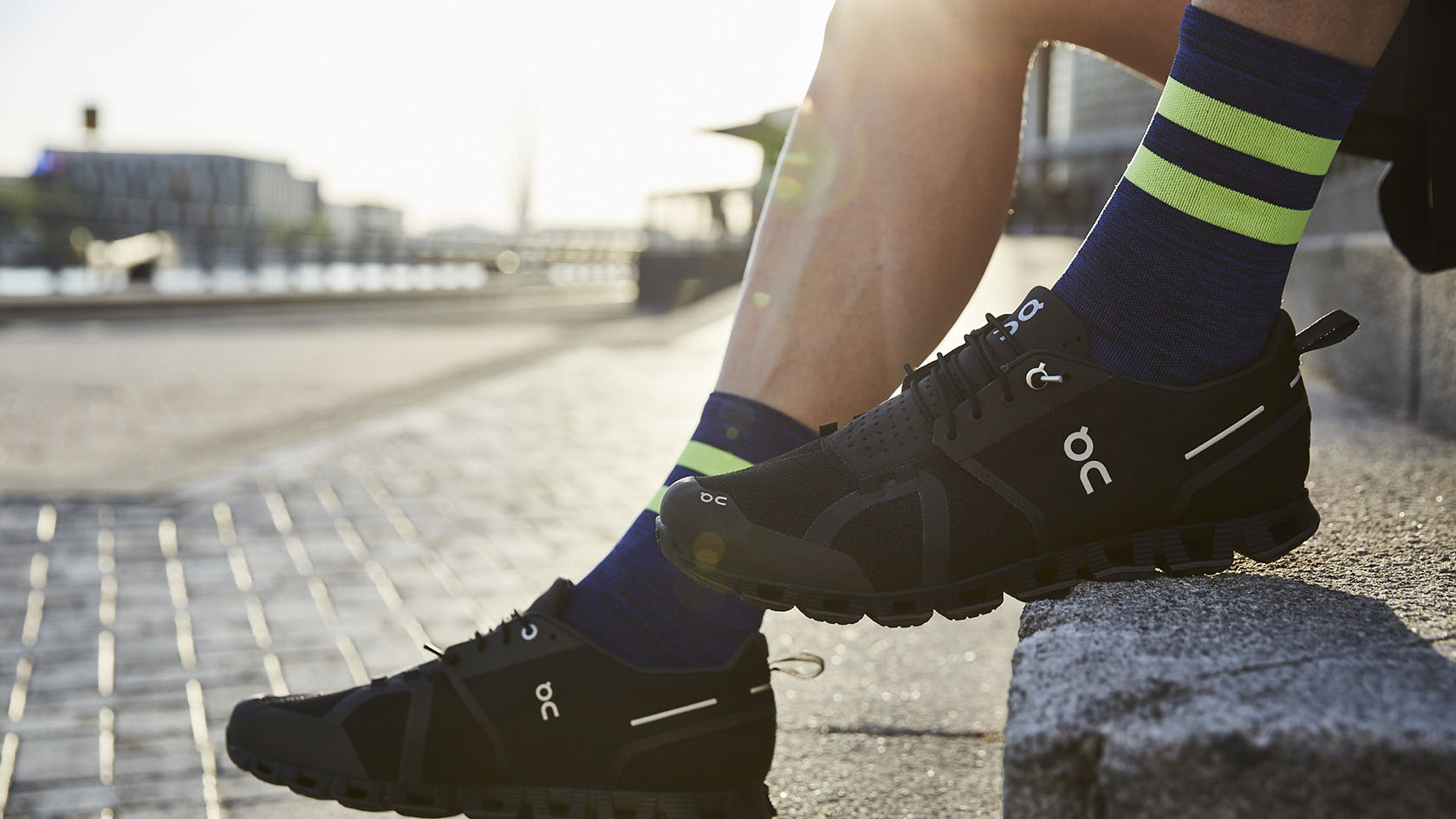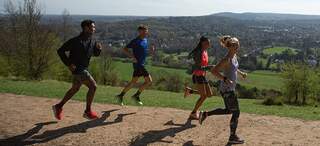Running is one of the most accessible forms of exercise, yet taking the first step can feel daunting. Whether you’re motivated by health goals, stress relief, or a desire to join parkrun communities, this guide combines evidence-based strategies with practical tips to help you transition from couch to confident runner. Let’s break down the process into manageable steps.
Preparing Mentally and Physically
Overcoming psychological barriers often proves harder than physical challenges for new runners. The NHS Couch to 5K programme emphasises that “starting can be the hardest part”, with many participants reporting initial anxiety about judgment or failure. Combat this by: reframing running as a skill to develop rather than an innate talent, and setting process-oriented goals (“I’ll run three times this week”) instead of outcome-focused targets
Physical readiness checks should include...
- A gait analysis at specialist stores like Runners Need to identify your foot strike pattern
- Basic mobility tests (e.g., standing knee lifts, ankle circles) to assess readiness
- A conversation with your GP if you have pre-existing conditions like asthma or joint issues
Building Your Foundation: The Run-Walk Method
Structured progression prevents burnout. Follow this 8-week adaptation of the NHS Couch to 5K framework.
Weeks 1-2:
- 5 min brisk walk warm-up
- Alternate 60 sec jog/90 sec walk ×8
- 5 min cool-down walk
Weeks 3-4:
- 5 min warm-up
- 90 sec jog/60 sec walk ×10
- 5 min cool-down
Weeks 5-6:
- 5 min warm-up
- 3 min jog/1 min walk ×6
- 5 min cool-down
Weeks 7-8
- 5 min warm-up
- Continuous jog building from 15→25 mins
- 5 min cool-down
Finding the Right Kit For You
Embarking on your running journey is exciting, but it’s only natural to wonder: what gear do I actually need? The good news is that you don’t have to break the bank or fill your wardrobe with the latest gadgets to get started. At the heart of every runner’s kit is comfort and practicality—so focus on what will make your runs enjoyable and injury-free.
For most beginners, the most important investment is a pair of well-fitting running shoes. The right shoes can prevent discomfort, reduce the risk of injury, and make those first miles much more enjoyable. Look for a model that suits your foot shape and running style—many specialist stores offer gait analysis to help you find the perfect fit. Beyond shoes, opt for lightweight, breathable clothing that keeps you cool in summer and layered options for warmth in winter. Technical fabrics like polyester and nylon wick away sweat and help regulate your temperature, while reflective details can keep you visible and safe if you run in low light.
Accessories like a basic running watch or smartphone app can help you track your progress, but they’re not essential right away. As you settle into your routine, you might want to explore items like moisture-wicking socks, running gloves for chilly mornings, or a lightweight jacket for rainy days—but these can wait until you’re ready to level up your kit.
Ready to find your perfect running kit? Discover everything you need—from top-rated shoes to weather-ready apparel—on our dedicated running gear page. Shop the latest running essentials now and get started on your running adventure today
Injury Prevention: More Than Just Stretching
Running is a high-impact activity, and beginners are particularly susceptible to common injuries such as shin splints, runner’s knee, and muscle strains. Preventing these issues requires more than just a quick stretch before or after your run. A comprehensive approach to injury prevention includes mobility work, strength training, and surface variation.
After each run, spend five minutes on a mobility routine that includes calf raises on stairs, hip circles using a resistance band, and toe yoga—lifting individual toes to strengthen the muscles in your feet. Incorporating strength training twice a week is also essential. Focus on exercises like glute bridges, which help stabilise your knees and prevent runner’s knee, single-leg deadlifts to improve balance, and plank variations to build core stability. These exercises not only reduce your risk of injury but also improve your overall running performance.
Rotating your running surfaces can also help. Alternating between roads, grass, and trails varies the impact forces on your body, reducing the repetitive stress that can lead to overuse injuries. Listening to your body and addressing any nagging pains early—rather than pushing through them—is key to staying healthy and enjoying your running journey.
Fueling Your Runs and Recovery
As your running routine becomes more established, paying attention to nutrition and hydration becomes increasingly important. What you eat before, during, and after your runs can significantly impact your energy levels, performance, and recovery. About 30 to 60 minutes before you head out, opt for a light, carbohydrate-rich snack such as a banana with peanut butter or a rice cake with honey. This provides your body with readily available energy without weighing you down.
For runs lasting longer than 45 minutes, consider carrying a small amount of easily digestible carbohydrates, such as energy gels or dried fruit, to maintain your energy levels. After your run, aim to eat a meal with a 3:1 ratio of carbohydrates to protein within 45 minutes. This could be something like salmon with sweet potato, which helps replenish glycogen stores and supports muscle repair.
Hydration is equally important. Weighing yourself before and after your run can help you gauge how much fluid you’ve lost and how much you need to replace. A general rule is to drink 1.5 litres of water for every kilogram lost during your run. For runs longer than an hour, consider adding electrolyte tablets to your water to replace lost minerals. Practising drinking from a bottle during your walk breaks can help you stay hydrated without disrupting your rhythm.
Staying Motivated and Overcoming Plateaus
Motivation can ebb and flow, especially when progress feels slow or life gets busy. Experienced runners often rely on psychological tricks to keep themselves on track. One popular strategy is the “10-minute rule”: commit to just 10 minutes of running, knowing that once you’re out the door, you’re likely to keep going. Joining a running community, such as a local club or an online group on platforms like Strava, can provide accountability and support. Tracking your progress visually—using apps that map your routes or chart your improvements—can also be incredibly motivating.
When motivation wanes, revisiting your original reasons for starting to run can help reignite your passion. Whether it’s for stress relief, improved health, or the joy of being outdoors, reminding yourself of your “why” can make all the difference. As many Couch to 5K participants have shared, running offers benefits beyond physical fitness—it clears the mind, reduces anxiety, and provides a sense of accomplishment that carries over into other areas of life.
Progressing Beyond the 5K
Once you’re comfortable running for 30 minutes continuously, you may feel ready to take your running to the next level. Introducing new challenges can help you continue to grow and stay engaged. Adding hill repeats to your weekly routine is a great way to build strength and speed. Find a gentle incline of about 100 to 200 metres with a 5–8% gradient, sprint up, and walk down, repeating this cycle six to eight times.
Tempo runs are another effective way to improve your fitness. After a 10-minute warm-up, run at a “comfortably hard” pace—where you could speak short phrases but not hold a full conversation—for 20 minutes, followed by a 10-minute cool-down. Exploring trail running is also a fantastic way to challenge your body in new ways. Trails require more stabiliser muscle engagement and offer varied terrain, making your runs more interesting and physically demanding.
FAQs
This is the top query. Beginners want clear, actionable steps to transition from a sedentary or walking routine to running. Most guides recommend starting with brisk walking, then gradually introducing short running intervals using the run-walk method, and following a structured plan like Couch to 5K.
New runners are often unsure about the essential gear. The consensus is that a good pair of running shoes is the most important investment. Specialist stores can help with gait analysis and proper fitting. Moisture-wicking clothing and a basic watch or app for tracking are also recommended.
Most beginner plans suggest running two to three times per week, with rest days in between to allow for recovery. Consistency is more important than frequency or distance at the start.
Short, manageable intervals are best—often starting with 1–2 minutes of running followed by walking, for a total of 20–30 minutes per session. The goal is to gradually increase running time as fitness improves
Injury prevention is a major concern. Tips include starting slowly, using the run-walk method, warming up and cooling down, listening to your body, and incorporating strength and conditioning exercises.
Beginners often worry about their form. Most experts advise focusing on comfort and gradual improvement rather than overthinking technique at first. However, a gait analysis can help identify if you need specific shoes or adjustments.
Nutrition questions are common. Pre-run snacks should be light and carbohydrate-based, while post-run meals should combine carbs and protein for recovery. Hydration is also important, especially for longer runs.
Motivation is a recurring challenge. Setting small, achievable goals, tracking progress, joining a running group or community, and scheduling runs like appointments are proven strategies.
Beginners are often unsure about their speed. The advice is to run at a “conversational pace”—where you can speak in short sentences without gasping for breath.
Related Articles







